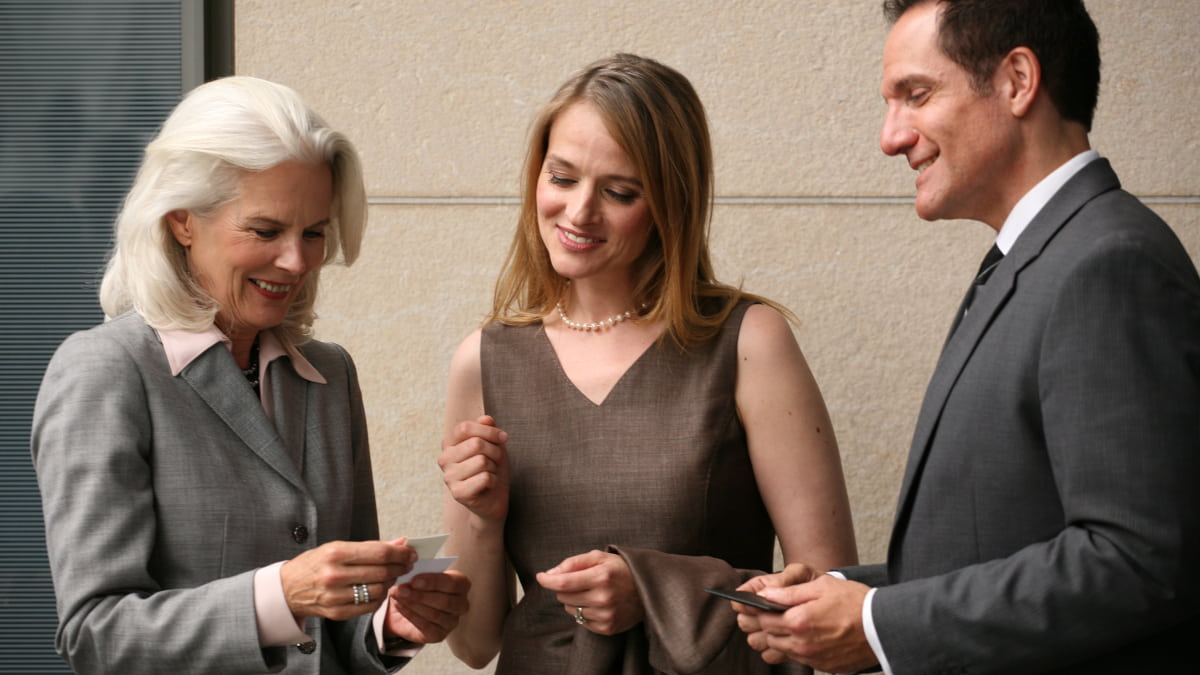With the advancement of digitalisation, the printed business card seems like an object of antiquity. But it continues to play a significant role in B2B business today. This is why it is good to know how you create a business card, design it and skilfully hand it out to customer contacts.

Business card: evergreen or dinosaur?
In light of digital marketing tools for all communication channels, the traditional business card made of paper may appear to be outdated. But this impression is false. Indeed, it is not the one and only decisive argument for a successful business deal. It never has been. But in the past as today, it can serve as a printed object of friendliness or act as a reminder – making it in some cases a small thing with a big effect.
A typical place where these are handed out are at trade fairs and similar in-person events. The business card can easily be given out at the flick of a wrist during a talk or in exchange for the other person’s card – without the use of a smartphone or app activation. Of course, such meet-ups are currently not entirely possible due to the corona pandemic. But times will certainly change.
If you would like to create a business card, you should design it carefully. This starts with its size. Basically, there are no rules, but there are certain conventions which are better to stick to. After all, the format should be able to easily fit inside standard business card cases and wallets. For this reason, the standard size of a business card is 85 x 55 millimetres.
Just as important as its size is the information printed on the card. It makes sense to create a business card with the following details:
- Name
- Company (possibly with company lettering and logo)
- Job position
- Address
- Phone number
- Email address
- Possibly information about one or two core competencies of the company
If it makes sense to also design business cards with eye-catching graphics depends on the desired company image and the industry. Experience has shown: in the B2B business, a serious appearance often comes across better than extravagant business cards with lots of optical elements or a host of additional information and digital addresses.
Business cards for B2B customer contact: what to keep in mind
It’s clear: business cards are not top of mind when it comes to cultivating sales, but they serve as a secondary marketing tool for a company’s own advertising – also in the B2B segment. The main thing is to leave behind a good personal impression. Here are a few practical tips:
- Business cards, for instance, are handed out during an initial talk or a business meal. This should take place subtly at the suitable moment, and, at the same time, happen openly and with appreciation.
- As is customary and as a sign of respect, the highest-ranking in the group receives a business card first. When other persons are present at the meet-up, they, too, should each be offered a business card.
- It’s best to always have a few cards with you in a business card case. This ensures the cards are not damaged and you quickly have them at hand.
- If you receive a business card, you should accept it with a clear interest, carefully put it away in a case and express your thanks.
You can take the occasion of handing out the business card to arrange the next contact, such as via email or social networks like LinkedIn. This enables both parties to easily transfer the digital contact addresses into their own CRM systems.
Alternative digital business cards
Of course, business cards today are also available as digital versions, such as vCards. They do not offer the haptic experience that printed cards do, but they have a few advantages otherwise:
- No printing costs
- Available at all time
- Distribution via email attachment, QR code, the website or NFC function
- Changes to contact data can be made flexibly
Whether digital business cards are an alternative depends first and foremost on the target group – or individual customers. Ideally, both variants should be available.
